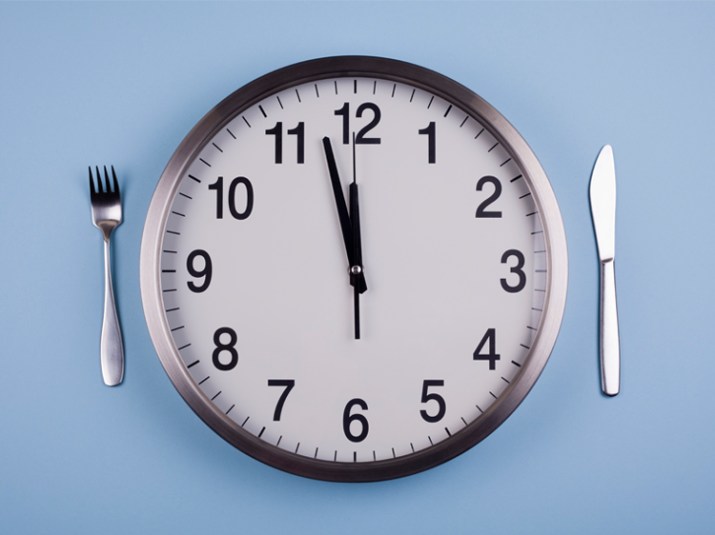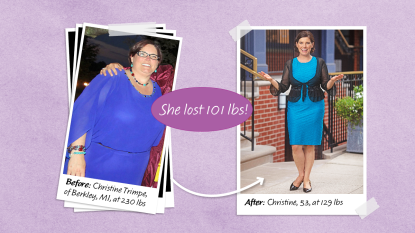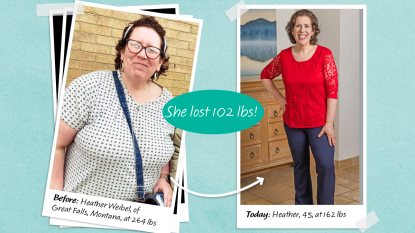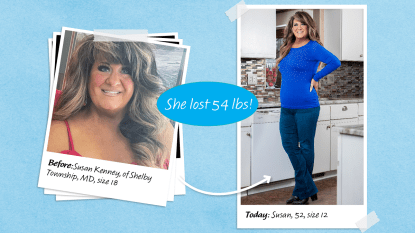This 12-Hour Fast Can Help With Weight Loss and Gut Health

If you’re interested in trying intermittent fasting for the first time, the “8 ’til 8 rule” might be a good place to start. We know intermittent fasting can seem a bit intimidating: The 16:8 diet and the 5:2 diet are both effective strategies for weight loss, but these eating plans can be quite challenging as well, due to the lengthy time periods they require you to go without eating. You’ll be happy to know that the 8 ’til 8 rule is much less restrictive than other forms of intermittent fasting — while still promoting weight loss.
What is the 8 ’til 8 rule?
The 8 ’til 8 rule has been making waves in the United Kingdom and Australia for quite some time, but we won’t be shocked if it becomes popular in America, too. As Harper’s Bazaar Australia reports, the 8 ’til 8 rule involves confining your daily eating window to 12 hours — specifically those hours between 8 a.m. and 8 p.m.
As UK-based general practitioner Dr. Rangan Chatterjee puts it, this type of intermittent fasting is good for weight loss as well as your gut health.
“Research shows that changing when you eat as well as what you eat can be beneficial in terms of weight loss, immune function, blood sugar balance and the health of your gut microbiome,” Dr. Chatterjee said in an interview with Get The Gloss. “If you give your gut bugs a break, you encourage the growth of other bacteria that help to clean out your gut lining.”
Chatterjee is not the only health expert recommending a 12-hour fast these days. Australian-based nutritional scientist Dr. Joanna McMillan told Whimn: “You need to have that overnight fast. I encourage at least 12 hours between dinner and breakfast so it allows your digestive system to have a ripple of stomach contraction.”
How to Follow the 8 ’til 8 Rule Correctly
The Wall Street Journal reported earlier this year that the latest research has found that restricting the time you eat to a 12-hour window not only helps you eat less, but it can also help with your blood pressure and aid in diabetes prevention. Although no types of food are off limits on this type of fasting, there are limits on when you can eat.
If you’re following the rule from 8 a.m. to 8 p.m. exactly, you can’t eat outside of that timeframe: Only water and other zero-cal drinks like black coffee are allowed. However, it’s worth noting that you can pick another 12-hour timeframe (such as 7 a.m. to 7 p.m.) if a true 8 ’til 8 will not work for your particular schedule. Also, keep in mind that this isn’t an invitation to go to town on ice cream sundaes and giant cheeseburgers; experts suggest eating normally and responsibly on a 12-hour fast — and any kind of fast, for that matter.
Unlike the 5:2 diet, you don’t need to heavily restrict calories any day during the week while following the 8 ’til 8 rule. And unlike the 16:8 diet, you don’t need to go 16 whole hours without eating each day. Although 12 hours might still seem like a lot of time to you, it’s worthwhile to keep in mind that you’ll be spending about 7 or 8 of those hours sleeping — the easiest part of intermittent fasting, if you ask us!
Next, learn about the tastiest superfoods that can help you live longer in the video below:
More From FIRST
Avocado Pit Broth Is Packed With Nutrients and Super Easy to Make
10 Foods That Fill You Up for Fewer Calories — And Actually Taste Good
Manuka Honey Is ‘Liquid Gold’ When It Comes to Killing Germs, But Only If You Buy the Right Kind













